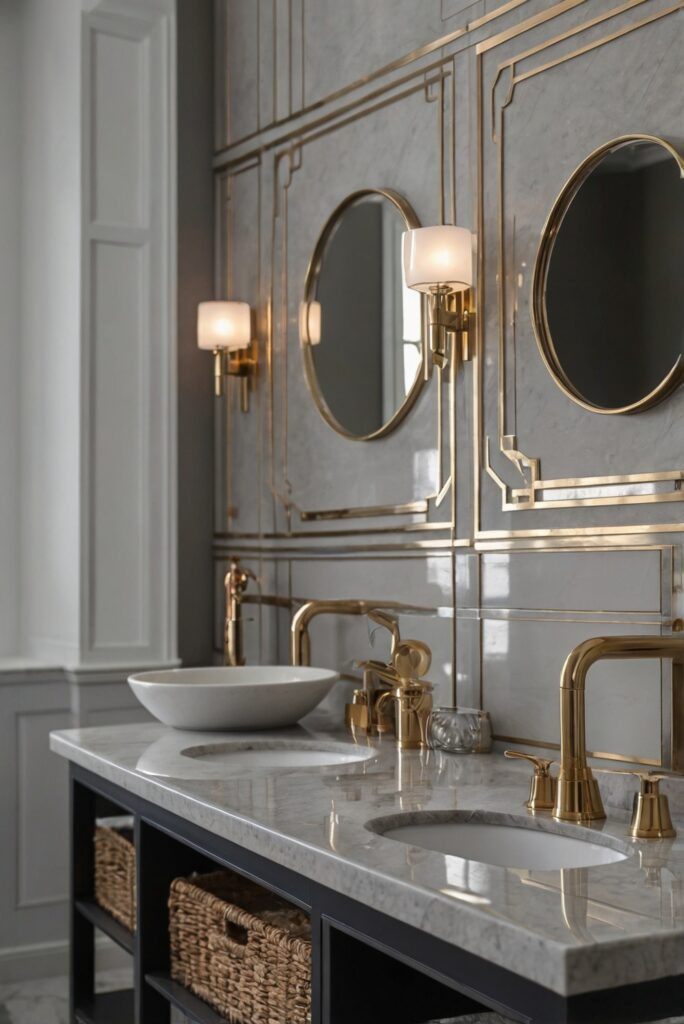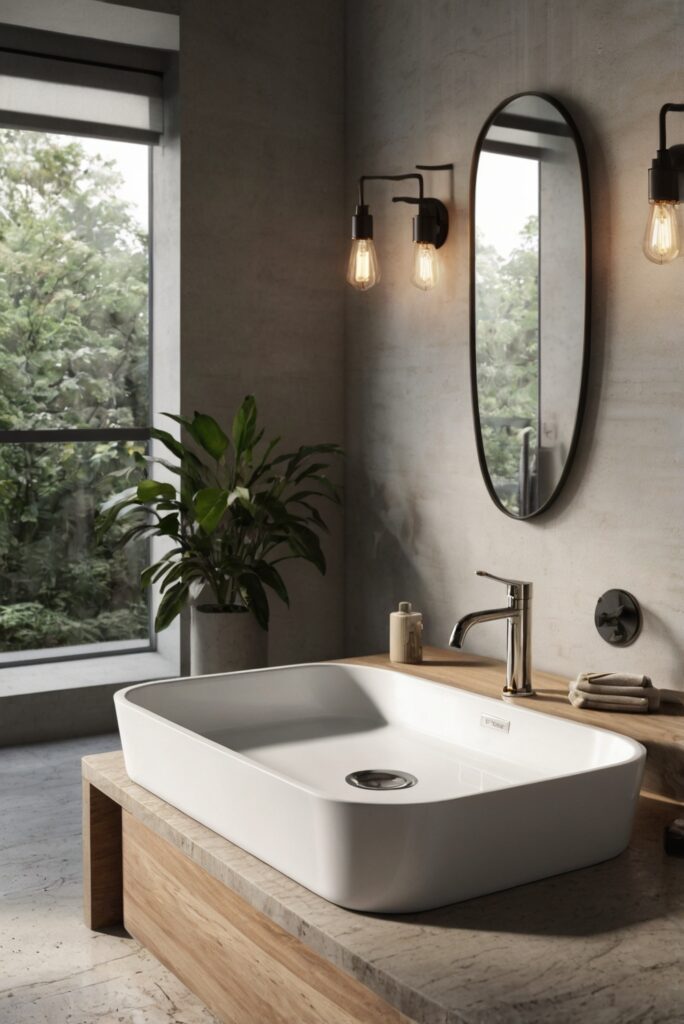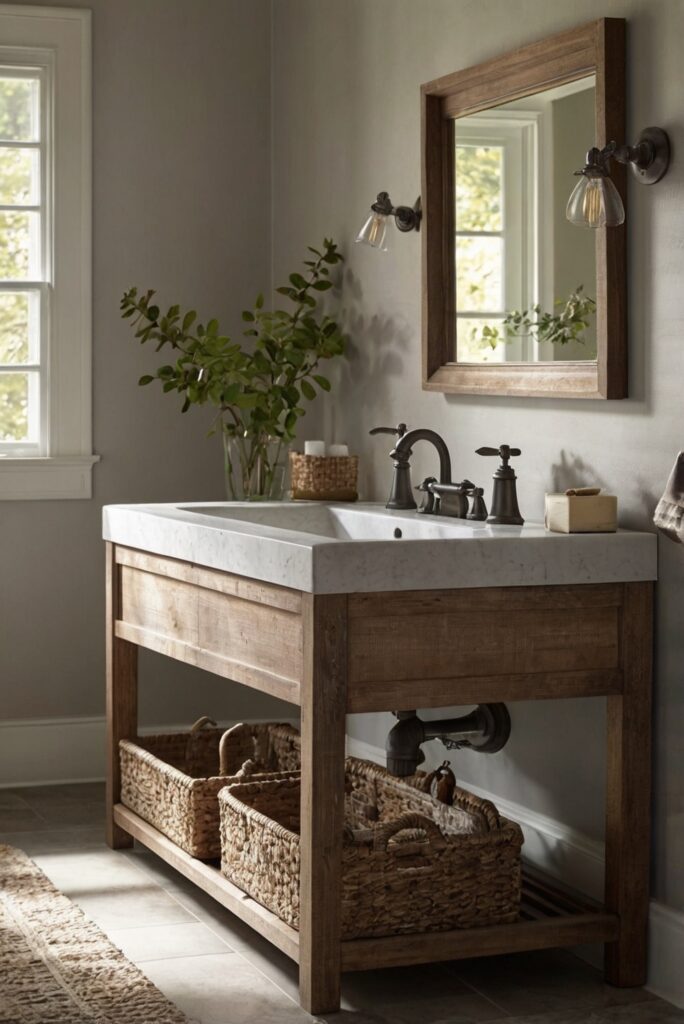Discover the secrets of selecting sinks for easy maintenance in your daily interior design routine. Keep your space looking fresh with practical advice on cleanliness and upkeep.
How to Choose Sinks That Are Easy to Clean and Maintain:
When selecting sinks for your home, consider the material they are made of. Stainless steel sinks are durable and easy to clean, while porcelain sinks offer a classic look but may require more maintenance.
Opt for a sink with smooth, non-porous surfaces as they are easier to clean and maintain compared to rough textures that trap dirt and grime.
Undermount sinks are a good choice as they eliminate the rim that collects debris and are easier to wipe down.
Regularly clean your sink with a mild soap solution and avoid abrasive cleaners to prevent scratches.
Consider the size and depth of the sink based on your needs and kitchen layout to ensure easy cleaning and maintenance.
Prioritize functionality and ease of use when selecting sinks for your home interior design to make daily cleaning routines seamless and efficient.
Consider the Material:
When choosing a sink that is easy to clean and maintain, the material plays a crucial role. **Opt for materials like stainless steel, composite granite, or fireclay, which are durable and resistant to stains and scratches.** These materials are also easy to wipe clean and maintain their shine with regular cleaning. Avoid materials like porcelain or copper, which require more delicate care and can easily stain or scratch.
Choose the Right Style:
**Select a sink style that suits your cleaning habits and needs.** For easy maintenance, consider undermount sinks that allow you to wipe debris directly into the sink without any raised edges to trap dirt. Additionally, single-bowl sinks are easier to clean than double-bowl sinks as they provide a larger, uninterrupted surface area.
Look for Easy-to-Clean Features:
**Opt for sinks with rounded corners and sloped bottoms** to prevent dirt and grime buildup. These features make it easier to wipe down the sink and prevent the accumulation of debris in hard-to-reach corners. Additionally, choose a sink with a high-quality finish that resists water spots and stains, making cleaning a breeze.
Consider the Installation Process:
**When choosing a sink that is easy to clean and maintain, consider the installation process** as well. Top-mount sinks can be more challenging to clean around the edges where they meet the countertop, while undermount sinks provide a seamless look that is easier to wipe clean. Choose an installation style that aligns with your cleaning preferences and habits.
Think About Long-Term Maintenance:
**To ensure your sink remains easy to clean and maintain in the long run, consider factors like durability, stain resistance, and ease of repair.** Investing in a high-quality sink made from a durable material will save you time and effort in the future. Regular cleaning and proper maintenance will also prolong the life of your sink and keep it looking pristine for years to come.
In conclusion, when choosing a sink that is easy to clean and maintain, consider the material, style, features, installation process, and long-term maintenance requirements. By selecting a sink that is durable, easy to clean, and suits your cleaning habits, you can ensure that your sink remains in top condition with minimal effort. Remember to regularly clean and maintain your sink to preserve its appearance and functionality for years to come.
1. What materials are best for sinks that are easy to clean and maintain?
When choosing a sink that is easy to clean and maintain, materials like stainless steel, granite composite, and fireclay are top choices. These materials are durable, resistant to stains and scratches, and easy to clean with just soap and water. Stainless steel sinks are particularly popular for their sleek look and non-porous surface that resists bacteria growth. Granite composite sinks offer a natural stone look with added durability. Fireclay sinks are known for their classic beauty and easy maintenance.
2. How can I prevent stains and scratches on my sink?
To prevent stains and scratches on your sink, avoid using abrasive cleaners or harsh chemicals that can damage the surface. Instead, use gentle cleaners and soft cloths to clean your sink regularly. Consider using sink grids or mats to protect the bottom of the sink from scratches caused by dishes and utensils. Avoid leaving standing water or acidic substances like vinegar in the sink for extended periods, as they can cause stains and damage the surface.
3. Are undermount sinks easier to clean than drop-in sinks?
Undermount sinks are generally easier to clean than drop-in sinks because they have a seamless design that eliminates the raised lip where dirt and grime can accumulate. With an undermount sink, you can easily wipe food crumbs and spills directly into the sink without any obstacles in the way. Drop-in sinks, on the other hand, have a lip that sits on top of the countertop, creating a ledge where dirt can collect. However, both types of sinks can be easy to clean with proper maintenance.
4. What features should I look for in a sink to make cleaning easier?
When choosing a sink that is easy to clean, look for features like a deep basin that can accommodate large pots and pans, a sloped bottom that promotes drainage, and rounded corners that are easier to clean than sharp corners. Consider opting for a sink with a satin or brushed finish, as these surfaces are less likely to show water spots and fingerprints. Some sinks also come with sound-absorbing pads or coatings that reduce noise and prevent condensation buildup, making them easier to maintain.
5. What cleaning products are safe to use on different types of sinks?
When cleaning sinks, it’s important to use products that are safe for the specific material of your sink. For stainless steel sinks, mild dish soap and water are usually sufficient for everyday cleaning. Avoid using abrasive cleaners or steel wool pads that can scratch the surface. For granite composite sinks, a mixture of water and mild dish soap is safe to use. Avoid harsh chemicals or acidic cleaners that can damage the finish. Fireclay sinks can be cleaned with mild dish soap and water as well, but avoid abrasive cleaners that can scratch the surface.



